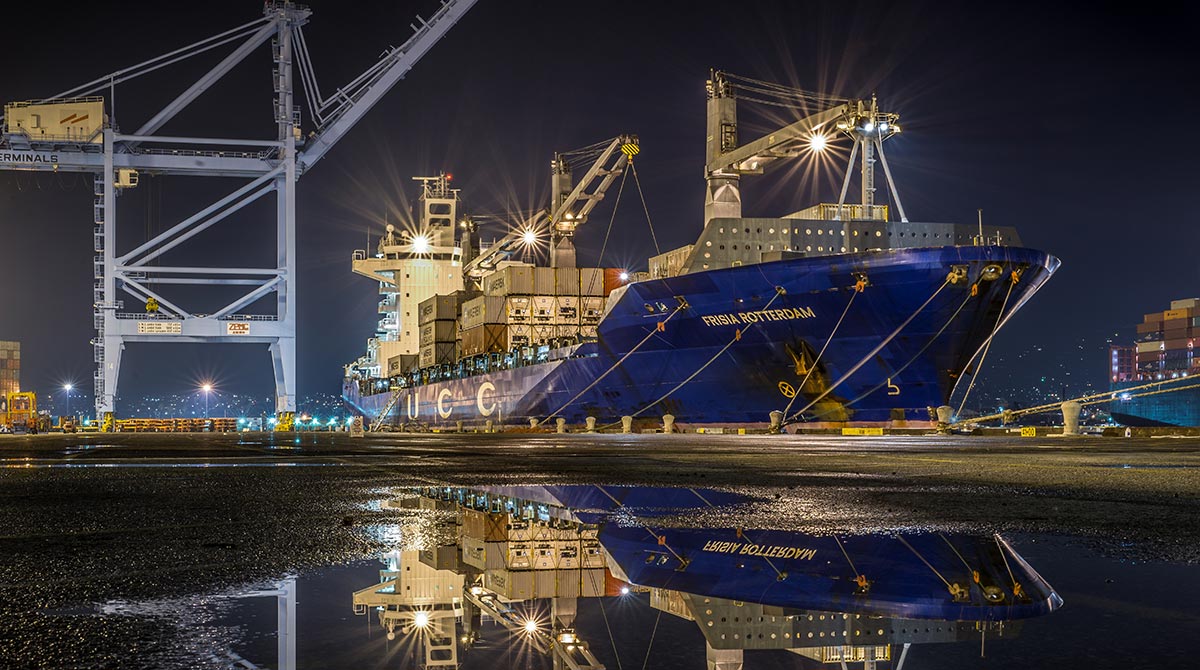March Was a Great Month for North American Ports

Container traffic increased in March compared with 2016 levels at the top North American ports, including a strong post-Chinese New Year upswing at the two largest ports — Los Angeles and Long Beach, Calif.
Cargo volumes increased 29% in Los Angeles to 788,524 industry-standard 20-foot-equivalent units, or TEUs, versus March 2016. Port officials said the five-year average for March was 646,724. Total imports jumped 30% to 373,549 and exports increased 20% to 191,772 year-over-year.
Through the first three months of the year, container traffic is 2.24 million TEUs, up about 10% from the record-breaking year in 2016. The Port of Los Angeles is the largest container facility in North America.
“We are pleased to end the first quarter of 2017 with strong volumes and continually efficient cargo handling operations,” said Gene Seroka, executive director of the Port of Los Angeles. “We continue to earn the confidence of shippers and are encouraged by the strength of our supply chain partners. In the coming months, we will remain laser focused on infrastructure improvements, technology solutions and a strategic use of resources to ensure that we meet the needs of our marine terminal customers and the carriers they serve.”
The Port of Long Beach, No. 2 in container traffic, reported an 8.7% increase in traffic to 505,382 TEUs in March. Loaded imported containers jumped 20% to 249,534, but exports fell 5.3% to 120,435.
“We’re happy to see these gains during the traditionally slow period of the year,” Long Beach Harbor Commission President Lori Ann Guzman said. “We see a lot of upside for the remainder of 2017 as we expand our partnership with the world’s second-largest line, Mediterranean Shipping Co., add new business and strengthen our relationships with our partners.”
Through the first quarter, the port handled 1.59 million TEUs, up 1.5% from 2016. All segments of containerized cargo grew year-over-year in the opening quarter: imports climbed 2.1%, exports 0.4% and empty containers 1.5%.
“The rise in imports coming through Long Beach shows that consumers are feeling optimistic,” Port of Long Beach Interim Chief Executive Duane Kenagy said. “Since their spending drives more than two-thirds of the economy, this is a great indicator for the jobs that depend on our Port as we head into the busiest trading months of the year.”
In Oakland, Calif., total container traffic grew 11% to 198,996 TEUs last month. Loaded import containers increased 19% to 67,517 and exports rose 2.4% to 82,419 versus March 2016 levels at the No. 9 ranked port.
Maritime Director John Driscoll credited the results to a return to normal trade patterns following the Lunar New Year celebrations.
“This is a nice rebound,” he said. “We’re watching now to find out if it signals stronger trade growth for the rest of the year.”
According to the port, 402 ships called in Oakland during the first three months of 2017, down 5.6% from 2016. However, overall numbers are up because those ships carried an average of 8.4% more containers in and out of Oakland.
On the East Coast, the Georgia Ports Authority reported that the Port of Savannah, No. 4, moved 311,770 TEUs last month, an increase of 5.6%.
“Strong demand from retail and manufacturing customers — both in the United States and abroad — is driving growth in Savannah and Brunswick,” GPA Executive Director Griff Lynch. “As existing port users expand their trade through our terminals and new customers tap into Georgia’s connectivity to major population centers across the Southeast, we expect to see additional job and economic development opportunities for our region.”
Earlier in April, the Army Corps of Engineers announced the cost to deepen the channel to the Port of Savannah will cost a whopping $973 million, up 38% from the previous $706 million estimate in 2014. The project would be necessary to handle larger Neopanamax vessels through the expanded Panama Canal. Worker began dredging 39 miles of the river that connects the Atlantic Ocean to the port in the fall of 2015 and the project isn’t expected to be finished until at least early 2022.
Meanwhile the Federal Maritime Commission approved an agreement to allow the Georgia and Virginia port authorities to share best practices and marketing efforts to lure steamship lines to direct larger vessels to their terminals.
“Cooperation between ports, with an eye toward maintaining world-class service, is a necessary part of today’s marketplace. As gateways to global commerce for the U.S. East Coast, the ports of Georgia and Virginia are critical links to the nation’s economy,” said GPA Board Chairman Jimmy Allgood.
The Port of Virginia, No. 7, reported a 9% jump in container traffic to 232,148 TEUs in March versus 2016, the fourth busiest month in its history.
“We are expecting volume to remain in positive territory as we move into spring and look forward to peak season. The new ocean-carrier alliances will be fully operational this month (April) and we will be seeing more big ships, like the Cosco Development, moving considerable amounts of cargo. As these ships arrive, planning and preparation are going to be paramount to our efficiency,” said John Reinhart, CEO of the Virginia Port Authority.
The Cosco Development is a 13,000 TEU vessel due to call in Virginia, Savannah, and Charleston, South Carolina from May 8-14. It’s one of two new Cosco routes beginning in May from Asia to the East Coast through the expanded Panama Canal.
Meanwhile, the Port of Charleston, No. 11, recorded the strongest monthly container volume in its history, moving 192,411 TEUs. It’s a 13% jump from March 2016 and surpassed the previous record set this January.
“The record volumes achieved by SCPA in March result from our broad-based efforts to increase our cargo base by providing good service to clients and enhancing our service offering,” said Jim Newsome, port authority CEO.




